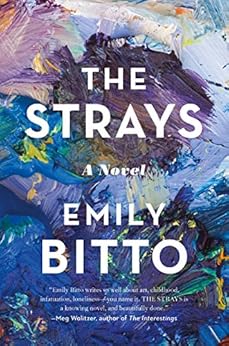3.5 Stars
For this
debut novel the author won the 2015 Stella Award, a major literary prize given
to female Australian writers. The book
is now being released in North America.
The
narrator is Lily who looks back at her childhood 50 years earlier. In the 1930s in Melbourne, Lily becomes
friends with Eva, the daughter of Evan Trentham, an avant-garde artist. Evan and his wife Helena start an artists’
commune, and Lily finds herself increasingly drawn to the glamourous bohemian
lifestyle of the Trenthams where she, Eva, and Eva’s two sisters (Bea and
Heloise) are unsupervised. From the
viewpoint of an adult, Lily examines the consequences of growing up in that
environment and without adult guidance.
Lily’s
fascination with the Trenthams and their colony of modernist painters is
conveyed very clearly. She speaks of
herself as living “on the periphery of these exotic scenes” and trying to
“inconspicuously harvest the information I desired.” She compares herself to a dog: “sometimes I felt myself to be a dog under
the table, scrounging after dropped morsels.
I was sly and skulking like a dog has to be.” A fear of being expelled from the household influences
her to make a decision which has a major impact on events. Her fascination continues into adulthood;
Lily admits that her “desire to lead an unconventional life” and her “reverence
towards the daring, the creative, the extraordinary” influenced her decisions
as an adult.
What is
also emphasized is the way in which the adults seem oblivious to the need for
them to take responsibility for the girls.
The adults are very self-absorbed; they focus on their own activities
and leave the girls to their own devices.
As a result, the children are exposed to nudity, drugs and alcohol at a
very young age. Evan and Helena largely
ignore their girls. It is not unusual
for Helena to tell her them to “’Buzz off . . .
I want your father to myself.’”
One of the artists even tells Helena, “’You ignore your children. It’s your husband who defines you.’” Bea, the eldest daughter, is expected to look
after her siblings. Evan is little
better than his wife in his attitude to his children; he tends to speak of his
daughters as his “progeny.” Some of the
other artists do occasionally take a hand in overseeing the girls’ activities
but they cannot compensate for neglectful parenting.
The parents
are not likeable characters. It never
seems to occur to them that their irresponsible parenting will have consequences. Helena is the character I found most
objectionable. She caters only to her
husband and is most interested in gardening, drinking and socializing. She worries about how her husband will react
to a negative review of his art but seems unconcerned when her youngest
daughter refuses to go to school or goes missing. When two daughters run away, the Trenthams
wait nine months before going to bring them home; after nine months, they
decide the girls “had strayed long enough.”
It is the
characterization of Lily and Eva which most interested me. The two are foil characters. Eva is everything that Lily wants to be. Eva is self-assured and possesses a
rebellious spirit whereas Lily lacks confidence. Lily hates being called a “goody two shoes”
and her decision not to tell Evan and Helena something crucial stems at least
partially from not wanting to do what is expected. She also wants to remain loyal to her
bold-spirited friend.
The title
of the book is perfect. There are any
number of people who are strays. Helena
speaks of their artist colony as a “community of strays” and loving to “take in
a few more strays.” One of the artists
calls himself a stray dog, and Helena says, “’We love stray dogs, don’t we
Evan? They’re the most interesting
kind.’” She calls Lily “our newest
little stray.” In many ways, all the children
are like strays who receive minimal attention.
And, of course, many people stray.
The artists stray from conventional art and a conventional lifestyle;
daughters stray from their homes; eventually, people stray from
friendships.
I do have a
few issues with the book. One is that
the setting is insufficiently developed.
Most of the events take place in the 1930s, but there is little
historical detail. I would have liked
more local colour. Another weakness is
that there are times when Lily goes on and on about her life with the Trenthams;
after a while, it becomes tedious to read once again about her infatuation with
them and their lifestyle. Though I
understand the need to make clear Lily’s motivations during a crisis, I find
some needless repetition.
One event
also bothers me. Lily’s parents
virtually abandon her when her father has an accident at work. Would parents leave their impressionable
daughter with people they know little about?
The one evening they spend together shows that the Trenthams’ values do
not match those of Lily’s parents. During
that evening, we learn that Lily’s parents say grace before meals, drink very
moderately, and don’t smoke at the dinner table; in other words, they are the
exact opposite of the Trenthams. Lily
takes pains to say that her mother was “impressed in her bourgeois way with
fame and pedigree” and thought that Lily had made “a good connection” by being
friends with Eva, but I am still not convinced that ordinary, conventional
parents, as Lily’s parents are supposed to be, would just drop off their only
child for nine months with virtual strangers whose activities cause public
scandal.
I would
certainly recommend the book. The book
has been compared to Ian McEwan’s Atonement. Though I don’t think it is the equal of
McEwan’s masterpiece, it is a good read.
Note: I receive an ARC of this book from the
publisher via NetGalley.

No comments:
Post a Comment